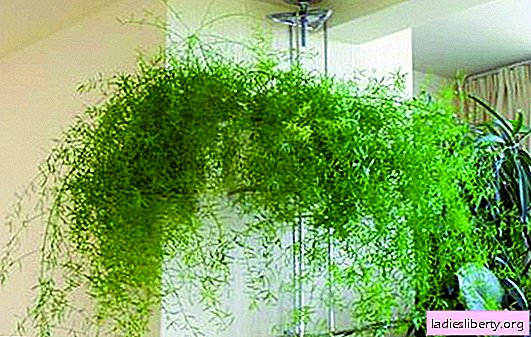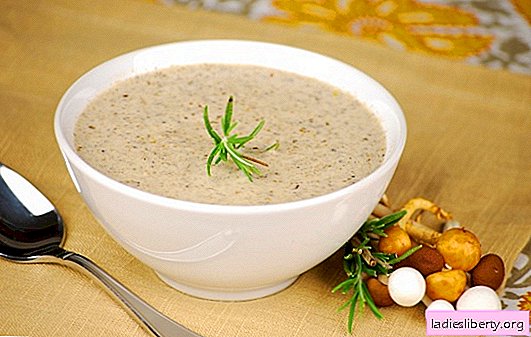
Apricot until recently was considered a heat-loving southern culture.
In fairly cool climatic conditions, its buds and flowers may be damaged, the fruits may be inferior in taste and size to those trees that require a warm climate for successful maturation.
However, breeders were able to develop apricot varieties, which, when planted and cared for properly, can withstand low temperatures, bear fruit in different climatic zones.
Apricot variety selection and preparation for planting
Productivity of a fruit tree depends on the correct choice of apricot variety, on planting and care, timely detection of diseases of the trunk, bark, branches and leaves. The selection of a species is determined by the taste preferences of gardeners (sweetness, juiciness of fruit) and aesthetic, such as the appearance of an adult tree. Nevertheless, planting material and its survival are directly related to the climatic conditions of different latitudes.
To grow apricot trees in the middle lane, you need to take only those varieties that are characterized by high frost resistance and endurance. The following species can be attributed to them - Krasnoshchek, Honey, Triumph of the North, Lel, Russian, Countess, Hardy, Snegirek, Favorit, Aquarius, Alyosha. Varieties Pogrebok, Uspeh, Krasnoshchekogo Son, Michurinets, Iceberg, Monastyrsky are suitable for the northern regions. They tolerate frost and unexpected thaws in winter well.
Apricot tree can be grown in three ways: from a seed, by cuttings or planting a seedling. It is necessary to choose a place for planting, taking into account the fact that this plant is light and heat-loving, afraid of drafts and northerly winds. Planting an apricot in a lowland is also not recommended, since it will be cold there. Best of all, this fruit tree survives on loamy, loose or loamy soils. The soil must be well drained, which will ensure uninterrupted supply of oxygen. In addition, soil moisture is of great importance: excess water can lead to decay of the rhizome.
How to grow apricot tree from seed
The seeds for growing this fruit tree are taken from those apricots that grow in the planting area. The fruits of the fruit must be ripe or ripe, large, without flaws and defects. If you plan to plant the seeds in the spring (usually in April), then you need to soak them for 5 days in cool water. Then the seeds are placed in a bag with holes where there is a moist substrate (sand, sawdust, moss), for 40-100 days until the seeds are cracked and sprouted.
The soil before planting is fertilized with mineral and organic fertilizers. Seeds are planted at a distance of at least 10 cm from each other and 50 cm between rows, to a depth of 6-7 cm. The bed needs to be abundantly watered.
When planning the planting of apricot kernel in the fall, you must wait for the first frost. Seeds are dried from spring, before being instilled, they are placed in water and only those that lie on the bottom are selected. Next, you need to dig a trench, put grass (or humus, sand, chernozem) at the bottom and arrange the bones. Top should be covered with humus or grass.
How to plant apricot cuttings
To grow apricot in this way, cuttings need to be harvested in the summer (mid-June - mid-July). They must be from the strongest processes. The best time to land is mid-September.
The place for planting the cuttings should be a groove of any length, 85 cm wide and 50 cm deep. Approximately 4 cm of river sand (coarse) and broken bricks should be laid on the bottom, then covered with soil from the ground, manure, sand (3: 1: 1) and wood ash. After, level the soil and slightly compact, pour a solution of water and potassium permanganate.
The shoot is placed in the groove at an angle of 45 degrees and drip.
Planting apricot seedling
When choosing an apricot seedling, it is worth paying attention to the root system of the tree itself and its general external state. It should be strong and healthy, the roots - without damage, not dried and not frozen. It is better to purchase seedlings in specialized stores in order to avoid the purchase of unplanned varieties, give preference to annual plants.
The pit for planting a medium-sized seedling should be approximately 50 x 80 cm (80 x 80 can be). It is worth considering that an adult apricot tree is quite large compared to other fruit trees, so the distance to neighboring seedlings should be at least 5 meters. To place a young seedling on a small hill, when the neck of the root is a few centimeters above the ground, not taking into account its shrinkage. The rhizome needs to be carefully straightened, covered with soil from the lower ground of the dug hole. After the soil is compacted, an earthen roller (less than 10 cm high) must be made around the planting site so that the water during irrigation remains at the tree, rather than spreading.

Apricot Care
Apricot trees, the planting and care of which require special attention and efforts to obtain good yields, need to be watered, protected from pests in a timely manner, fed and trim the crown.
Despite the fact that the plant is quite drought tolerant, in the months of active growth (May - June) it is necessary to water it regularly. Watering is best done in the evening or early in the morning. It is worth paying attention to the amount of moisture in the soil: in the presence of excess water, the procedure is not necessary.
In spring, proper apricot tree care includes pruning. This allows you to create good lighting, increase productivity, fruit quality. It is necessary to remove dried, spoiled branches. Overloading with fruit trees will lead to weakening and deterioration of the plant.
In autumn, apricot must be prepared for the winter cold. So that the plant does not frostbite and does not die, it is necessary, first of all, to protect the root system of the tree. To do this, in a radius of 1-2 meters, you need to dig up the ground and scatter leaves, humus, peat with a layer of about 10-20 cm.The root neck of the apricot suffers greatly in cold weather: it heats up from temperature extremes, which negatively affects the tree's resistance to cold weather. To protect it, the trunk should be wrapped in several layers with burlap. If desired, you can completely wrap the fruit tree in a film. So, despite the frost, in the spring the apricot will bloom.

Fertilizing Apricot Trees
Organic fertilizers are used to feed apricot. Manure is brought into the soil at the rate of 4 kg / sq.m. 2-3 times a year, compost at the rate of 5-6 kg / sq. m., mineral fertilizers are added to them.
In spring, nitrogen-containing fertilizers must be introduced into the soil (approximately 20-30 g / sq. M. Of the trunk circle). After the tree has begun to bear fruit, it is advisable to fertilize with the following mixture: ammonium nitrate, potassium salt, superphosphate in a ratio of 4: 3: 1. For 1 square. m. of soil requires 50 g of fertilizing compound.
If the soil is acidic, then calcium must be added to it, preferably in a liquid state.
Pests and diseases of apricot trees
Apricot, planting and care of which are important, but not the only components for the general condition and productivity of the tree. Fertility depends on the timely detection of plant diseases and the adoption of measures, disposal of pests.
The main insects that harm apricot:
• aphid - these insects drink leafy juice, thereby drying the foliage. It fades, changes its color, photosynthesis is disrupted, and therefore the productivity of the fruit tree is reduced;
• codling moth - caterpillars that hatched at the end of summer eat apricot fruit, then wrap themselves in a chrysalis and winter near the trunk circle;
• leaflet - these butterfly pests lay eggs in the bark and fallen apricot leaves for the winter. In the spring they wake up, eat foliage and buds, in the summer butterflies come out of them, which, in turn, lay their eggs again for the winter.
You can cope with insects using purchased insecticides or make them yourself.
Apricot tree diseases include the following:
• moniliosis - a fungal disease, the reproduction of which occurs very quickly by wind, rain or insects. The foliage on the tree looks shrunken, like after a fire. You can protect the plant by treating them with drugs that contain copper. At the slightest suspicion of an illness, it is worth processing all the fruit trees around.

• hole spotting - affects primarily leaves and fruits. The leaves become covered with spots of a reddish-brown color, after 7-14 days they turn into holes. The fruits begin to suffer from the disease even in green form, and in that period, when they should already be ripe, they become irregular in shape, deformed.

• mushroom valsa - This disease manifests itself when an infection gets into the wound of a tree. Outwardly, it looks like an orange ulcer. It is scraped off and treated with antifungal drugs and garden varieties.
So, in order to get a good harvest, you need to be attentive to the health of the apricot tree, properly take care and timely fertilizer.











